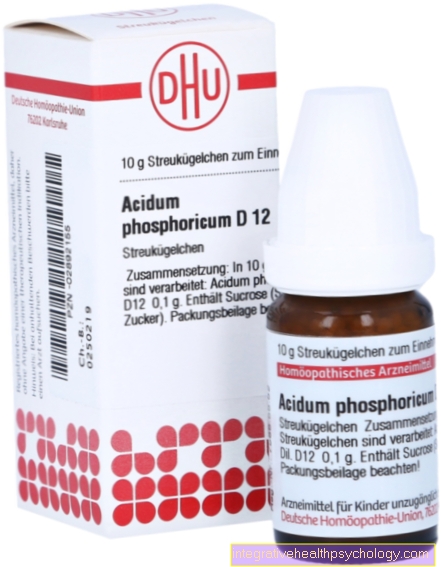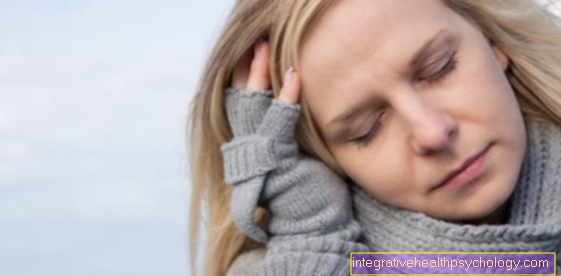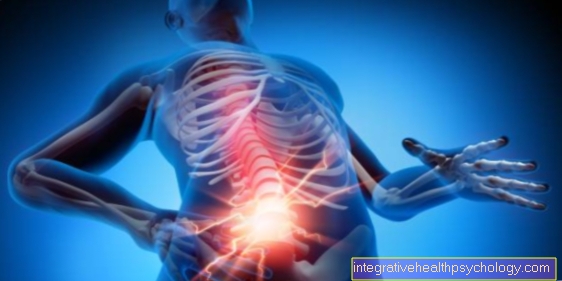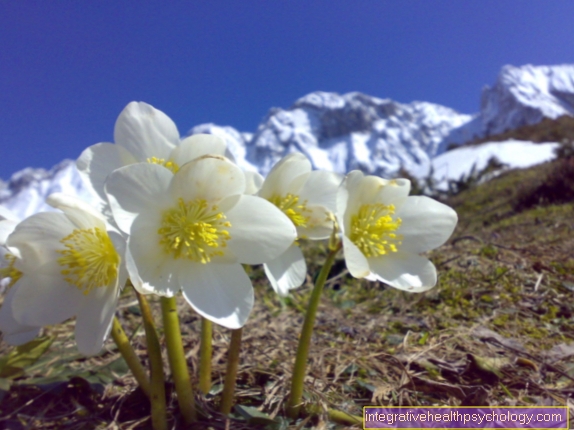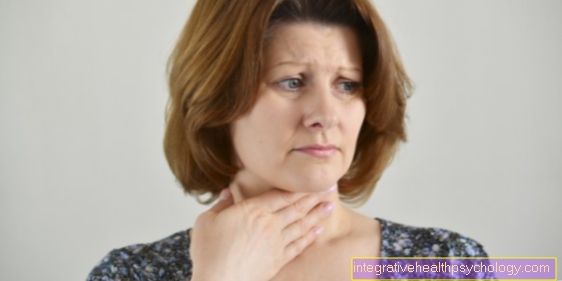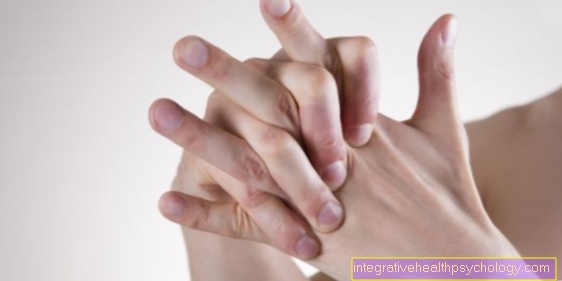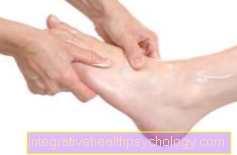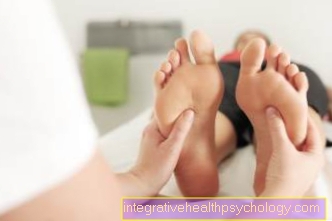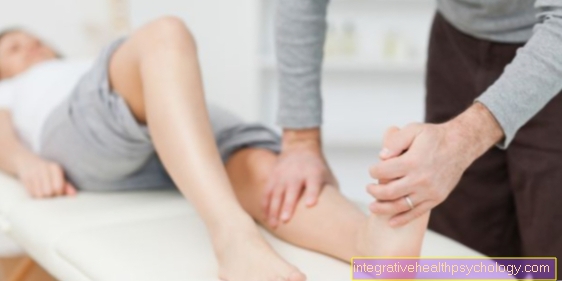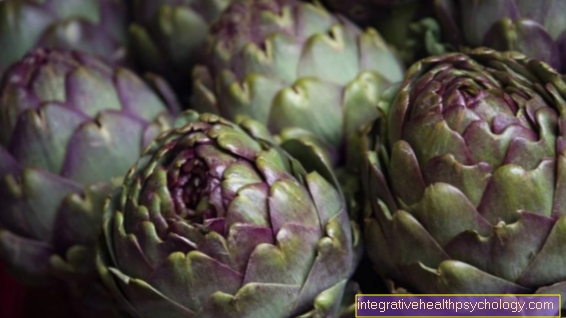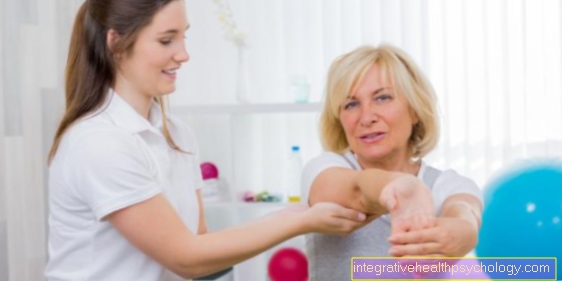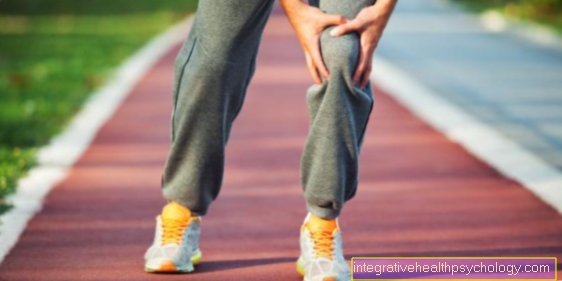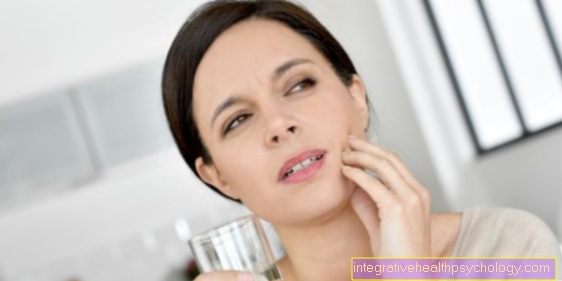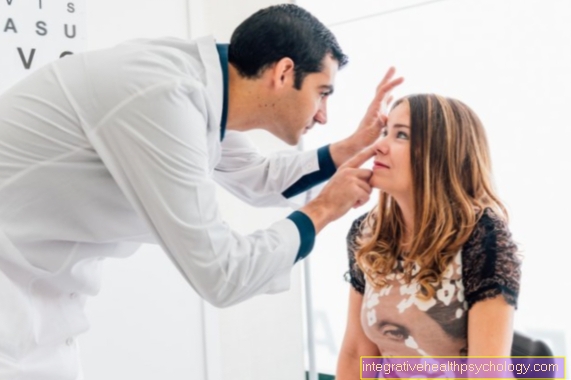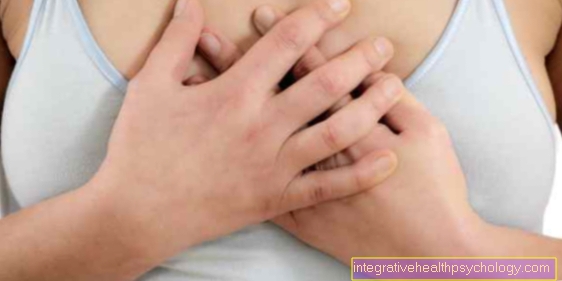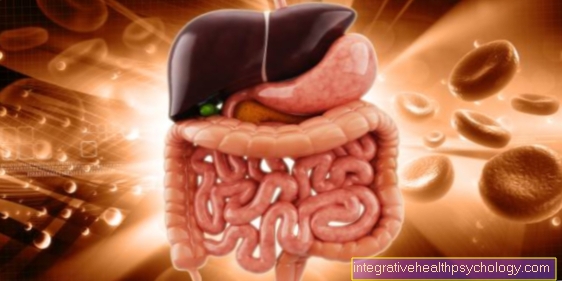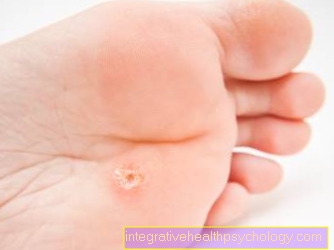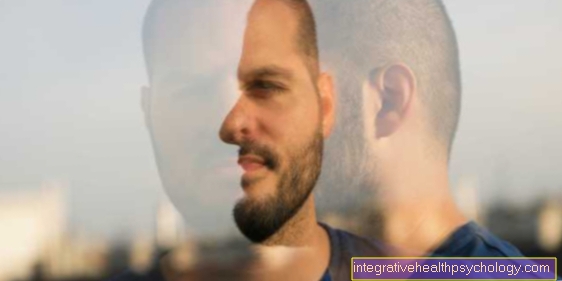Herbal medicine
Introduction and basics
The light of the sun, carbon dioxide and green leaves are the substances from which plants can produce carbohydrates, proteins and fats with the help of water, nutrient salts and trace elements.
Starting with the photosynthesis develop primary and secondary plant metabolism and thus valuable medicinal substances.
This natural remedies For a long time they were the only medicine for doctors and a source of raw materials for the manufacture of medicines in pharmacies.
At the beginning of the twentieth century chemistry developed and the pharmaceutical industry focused on the manufacture of chemical drugs.
With their help it was possible to defeat a number of diseases that were previously life-threatening or incurable.
Despite this development, the Medicinal herbs and do not completely forget the drugs made from them.
The vegetable raw materials are still used today Isolation of active ingredientswhich are irreplaceable for therapy, the synthesis of which is unknown or very expensive.

The Folk and herbal medicine has never stopped using the medicinal properties of plants and still maintains this healing tradition today, which goes back to the beginnings of mankind.
Already in the first written records from ancient Egypt and China there is also about the Medicinal properties of plants reported.
Some of the plants mentioned at that time are still used in herbal medicine today.
Centuries later, the Greeks took the lead in the field of medicinal plants and medicine. Names like Aristotle, Hippocrates, Theophrast, Dioscurides and, last but not least, Galen have to be mentioned. He developed the technique of Drug preparation (Galenics).
After the decline of Roman civilization, Arabic medicine flourished in the Middle Ages. The most famous doctor of the time was Avicenna.
In our culture, Charlemagne issued the so-called Landgüterverordnung in which the Cultivation of medicinal and aromatic plants was ordered.
Under Frederick the Second, the Pharmacist profession brought to life. During this time the so-called monastery medicine blossomed through the copying of manuscripts.
Hildegard von Bingen became famous in the twelfth century. She was an abbess and scientist and wrote two treatises: "Physica" and "Causae et curae". These scriptures had a great influence on the development of the German medicinal herb names and the Herbal medicine.
Before that, medical schools had already formed in Salerno, Italy and later in Montpellier, France, which tied in with the authors of antiquity and with Arabic healing arts. They were the forerunners of today's universities.
Much later, two disastrous events led to the spread and expansion of knowledge about medicinal plants.
In 1450 Guttenberg discovered the art of printing and in 1492 Columbus discovered America.
Many arose printed books on medicinal plants and many new drugs have been brought to Europe from overseas.
Today, following a tradition spanning several thousand years, herbal medicine is not at the end of its development, but in a successful new phase.
Of all the plants living in this world, less than 10 percent have really been tested for their ingredients.
always new plant ingredients are discovered and in addition to their pure use they also serve as Model substances for pharmaceuticals.
Today medicinal plants are primarily used too Finished medicinal products processed in whole or in part of vegetable origin are.
Of the multitude of medicinal plants, many have been forgotten today, regardless of their effectiveness, and only appear in older pharmacopoeias. Others, however, are frequently used, appear in the common pharmacopoeias, and deserve the trust of doctor and patient for the following reasons:
- The Ingredients are explored and theirs chemical nature is known.
- The main herbal active ingredient can be standardized with modern laboratory medicine, that is always one consistent effect is achieved.
- In addition to the effect, the Side effects known of medicinal plants.
Herbal medicinal plants are therefore not "free of side effects“, But their side effects are irrelevant as long as the drugs are limited to the common mild preparations. - The medicinal plants contain natural combinations from main and side active ingredients which often complement each other with other accompanying substances.
For example, contains an from Chamomile flowers Properly produced chamomile full extract in addition to the main active ingredient also accompanying substances that affect the anti-inflammatory and antispasmodic effect of the plant.
When it comes to the production of medicinal plants, the field cultivation in the foreground, because the medicinal plant culture offers the following advantages over the insufficient wild collection:
- Field cultivation closes confusion and largely too pollution out.
The fields should not be in the vicinity of busy roads, pesticides must not be used. - Of the Active ingredient content is constantly monitored during the growing season and harvested at the best possible time.
- Of the high yield does the complex further processing such as cleaning, gentle drying and removing the active ingredients are possible and profitable.
- By breeding it is possible to grow high-quality medicinal plants with a higher content of active ingredients.
- By always treating uniform plants in the same way only results small fluctuations in the active ingredient content.
The collecting of medicinal plants in the wild depends very much on the good knowledge and experience of the collector.
A solid one Knowledge of plants, of their Locations and the right one Collection time is essential. Otherwise there will be confusion with similar species, which can sometimes be harmful or poisonous.
Basically you just collect healthy, undamaged and well developed Plants, in good and dry weather. Only one species is collected at a time and must be dried as soon as possible after harvesting. This usually only happens at the beginning (if any) briefly in the sun, then in the shade in a well-ventilated room.
The fresh living plant that contains active ingredients is called Mother plant. In this state it is not yet a drug. You only get this when you prepare the plant or parts of the plant, especially through the dry.
The subsequent cutting, grinding, sieving, pulverizing is done in pharmaceutical works carried out by machine.
Just that Peeling roots (for example from rhubarb or marshmallow) has to be done by hand and requires experience.
The processed medicinal plants are called vegetable drugs designated (Vegetabilia). The drugs are named in Latin, depending on which part of the plant they come from:
Herb (herba), young tips (summitates), Stalk (caulis), Buds (gemma), Leaves (folium), Wood (lignum), Bark (cortex), Blossoms (flos), Scar (stigma), Fruits (fructus), Stem (stipes), Seeds (semen), Glands (glandulae), Spores (sporae), Root (radix), Rhizome (rhizoma), Tuber (tuber), Onion (bulbus).
In addition to the parts listed, vegetable juices (succus), Resins (resinae) or balms (balsam) collected.
Sometimes their name is included in the name of the drug Processing type included:
Natural (naturalis), peeled (mundata), sliced (concissa), powdered (pulvis).
The active ingredients of medicinal plants
Medicinal plants processed into drugs contain a number of active ingredients, most of which have an effect on the human organism.
These active ingredients, their structure and plant in the plant are controlled by the Plant chemistry (Phytochemistry) examined.
This is closely related to the pharmacology together, the science showing the effect of Medicines examined on the human body.
The medicinal plants contain two different types of active ingredients.
First of all, these are substances which are indispensable for the life of the plant and in all green plants by the photosynthesis arise.
Then the plant contains substances that are apparently useless for the plant (Fiber), but often important Therapeutics are.
These are for example essential oils, Resins and other important substances like that Alkaloids of Ergot or Opium.
These substances are usually contained in plants together with other substances. The individual ingredients complete yourself and enhance the effect, but that determines Main active ingredient the medicinal use of the plant.
How strong, however Side active ingredients influence the effect of a medicinal plant becomes clear when the main active ingredient is isolated. The effect often changes significantly.
Only the interaction of all ingredients (also the fiber) gives the medicinal plant its unique effect.
The active ingredients are not evenly distributed over the plant. Sometimes they are preferably stored in flowers, leaves, roots, seeds, fruits or the bark.
Of the Active ingredient content of medicinal plants fluctuates - due to their Location, by harvest and Contribution. So it is important to harvest at the right time and to take great care in processing.
The word “drug” does not mean that it is an intoxicant or an addictive substance. The pharmacist uses the word "drug" as a term for prepared medicinal plants. The job title “Druggist” is also derived from this term. Only recently have drugs and intoxicants been given the same name.
The most important active ingredient groups of our medicinal plants are
Alkaloids
This is about very strong plant poisons. These are, for example Atropine (Deadly nightshade poison), the Morphine (Poison of the opium poppy) or that Colchicine (Poison of the autumn crocus).
They are processed in large quantities by the pharmaceutical industry.
They can also be found in non-toxic medicinal plants, and as side active ingredients they support the healing effects of the main active ingredient.
Glycosides
They are widespread in the plant kingdom. They split into one in the water sugar and one Non-sugar the so-called "Aglycon" on. Aglycon determines the effect.
The absorption of active substances from the plants and the transport to the specific organs is favorably influenced by aglycon.
Saponins
They are widespread in the plant kingdom and are similar in structure to glycosides.
Saponins influence the medicinal plants Intake of other herbal active ingredients, whereby sometimes small amounts of active ingredient have a big effect.
However, they are not entirely harmless, as they have the property of allowing the red blood pigment to escape from the red blood cells.
Some saponins are therefore toxic and not usable.
Bitter substances
They taste bitter, irritate them Taste receptors on the tongue, increase the appetite and increase the production of Stomach- and others Digestive juices.
Tannins
Tannins are phytochemicals that are able to Protein substances the skin and mucous membrane too tie and to convert them into insoluble substances.
This is also the basis of their healing properties in that they cause some disease that has settled on the skin Bacteria deprive the breeding ground.
Essential oils
It refers to volatile liquids with a characteristic scent similar to oils.
Plants contain a lot of essential oils in warm and sunny weather, this is also the best time to harvest.
Fatty oils
You are at room temperature liquid, in water not soluble. This includes our vegetable oils such as olive oil, sunflower oil, rapeseed oil, almond oil and many more.
The oils are not just used to prepare Medication (for example castor oil) but of course also used as food.
Glucokinins
These are the active ingredients of plants in the human body Sugar metabolism can influence.
Plant slimes
they consist of Polysaccharides, swell in cold water and gel.
In many cases, they significantly increase the effectiveness of other active ingredients contained in the plant.
Flavonoids
These are substances with the same basic chemical structure and are widespread in the plant kingdom. They are also known as "bioactive substances" and their presence increases the value of plants for the human body and plays a decisive role in the overall effect of a medicinal plant.
Classification of medicinal plants according to their effect

Amara
Bitter substances that affect stomach function in the event of loss of appetite and are administered before eating.
For example: Centaury, gentian, marshmallow, bitter clover, coltsfoot, hemp.
Astringents
Act on the surface of the skin and mucous membranes.
For example: bearberry, sage, bloodroot, daisies, lady's mantle, oak bark.
Anti-inflammatory drugs
They have a beneficial effect on wound healing, reduce inflammation and accelerate the regeneration of damaged tissue.
For example: chamomile, marigold, sweet clover, rosemary.
Carminatives
Favor the passage of intestinal gases and alleviate cramps.
For example: chamomile, anise, fennel, peppermint, juniper, caraway, sage.
Diaphoresis
These are substances that support sweating.
For example: linden blossom, mullein, speedwell, pansy.
Antidiaphoretic agents
Substances that work against excessive sweating.
These include: valerian, sage, deadly nightshade and, to be used externally, walnut and oak bark.
Diuretics
These drugs have a diuretic effect.
These are for example: bearberry, juniper, elderberry, parsley.
Expectorantia
These substances make it easier to cough up, dampen inflammation and reduce the urge to cough.
For example: marshmallow, mallow, plantain, reindeer moss.
For example, aniseed, fennel, peppermint, thyme, coltsfoot have a thinning effect and thus also facilitate coughing.
The excretion of the bronchi increases, among others: cowslip, liquorice, mullein.
Antitussics
They belong to the expectorantia and relieve coughing attacks. These are mainly tea mixtures, made up of, for example: marshmallow, mallow, plantain, reindeer moss.
Cholagoga
Support the formation and delivery of bile juices. First and foremost, these are: ormennig, artichoke, alant, rhubarb, radish, milk thistle.
Laxantia
Are agents that have a laxative effect by accelerating the bowel movement.
For example: buckthorn bark, ragwort, licorice root, rhubarb root.
Cardiotonics
These are drugs that stimulate the heart and promote the excretion of water.
These are decisive: red and woolly thimble, adonis, lily of the valley, hawthorn and hellebore.
Antiasthmatics
They counteract bronchial spasms and are used for asthma.
These include: henbane, deadly nightshade (toxic!) and thorn apple.
Sedatives
These substances have a mild calming effect.
For example: valerian, hops, passion flower and heather.
Anti-sclerotics
These substances counteract the calcification of the blood vessels. Drugs containing rutin and vitamin C are used here.
For example: garlic, hawthorn, sundew and mistletoe.
Hypotensives
They work against high blood pressure in the early stages.
For example: valerian, oats, garlic, honey clover, hawthorn and hops.
Anthelmintics
They work against intestinal parasites.
For example: potted fern, goosefoot, carrot, onion, earth smoke, pomegranate, delphinium and pumpkin.
Antidiabetic drugs
They can have a beneficial effect on diabetes by promoting the excretion of insulin from the pancreas.
For example: hawkweed, lingonberry, bean, bilberry, burdock.
Gynecological products
These substances act on the uterus and urinary tract.
For example: ergot (toxic!), Gundelrebe, shepherd's purse, black cumin, knotweed.
Opstipantia
These counteract diarrhea.
For example: activated charcoal, oak bark, cinquefoil, bloodroot.
Cytostatics
They contain substances that can influence the formation of tumors.
For example: mistletoe, water lily plants, evergreens.
Drug forms
Teas and tea mixtures (species)
These are mixtures of dried and shredded plants.
Teas can also be used for Envelopes used, but must then be specially marked.
In the case of tea mixtures, which predominantly leaves, herb or blossoms contain one tablespoon (3g) per 150 ml of water.
For mixtures mainly from root, Wood or Fruits a teaspoon (1.5g) per 150 ml.
Plant extracts
You will go through Leaching won. The active ingredients of the drug are absorbed by liquids (Water, alcohol or similar) dissolved cold or under the influence of heat.
The extract obtained is sometimes also thickened.
One distinguishes liquid, thin, thickness and dry extracts.
Infusions
It is this aqueous extracts of plant parts. It is the fastest and most common form of drug preparation. You pour boiling water over it, let it steep and then pour it through a sieve or filter.
The rule: 1 g drug / 10 g infusion.
Decoction
Here, the shredded parts of the plant have to beusually 15 minutes) boil in the water. The still hot decoction is poured through a cloth and squeezed out.
Usually one uses 1g drug and 10 parts water.
You do not prepare decoctions in advance, but prepare as needed.
Tinctures
Tinctures are plant extracts that are usually made with 70 percent alcohol getting produced.
They are colored differently depending on the raw material. They are used internally (drop by drop on sugar or in water) or externally for douches and compresses.
Medicinal wines
Medicinal wines are occasionally used in folk medicine. Obtained from dry crying, in which plants (for example rosemary or valerian) lets it draw for a while.
Medicated oils
Medicinal oils are drugs dissolved in vegetable oil that can be used externally and internally.
Pills
In addition to the herbal ingredients, they contain a number of Auxiliary materialswhich are necessary to give the pills their shape.
These include, for example: Sweet powder and Licorice juice, Powder out gentian and Valerian root, Yeast extract etc.
Medical liniments
Medical liniments are liquid, thick or gelatinous preparations that act on the skin applied and rubbed in.
Medicinal aromatic water
Medicinal aromatic waters are made up of essential oils from plants in water mixed with alcohol. They are always freshly made and have a very limited shelf life.
Syrups
Syrups are concentrated solutions of sugar in water and plant extracts. They are used internally and are particularly suitable for children.
Tablets
They are made from powdered herbal drugs (Additional auxiliary materials) and applied internally.
They have different shapes and are often made of fabrics envelopedso that the active ingredients are not already in the stomach but only in Intestines come into effect.
Injections
These liquids must be pure and sterile. You will be under the skin, in the muscle or directly into the Bloodstream injected.
Anoint
They consist of the actual remedy and a fat base (for example Vaseline, oils, lanolin).
They can be easily rubbed in at normal temperature.
Pastes are basically more solid as ointments.
Creams, on the other hand, contain more than 10% water and have different consistencies.



